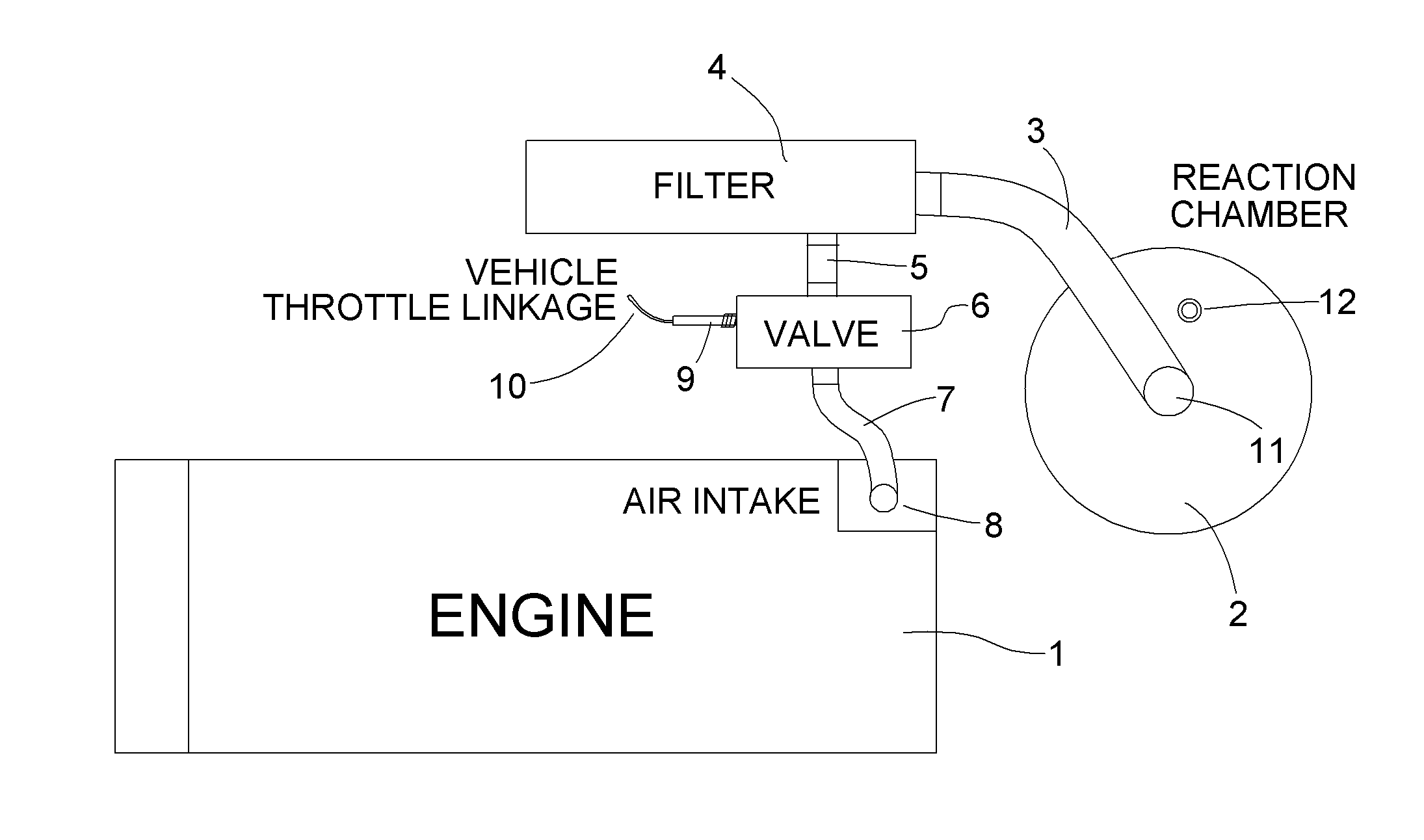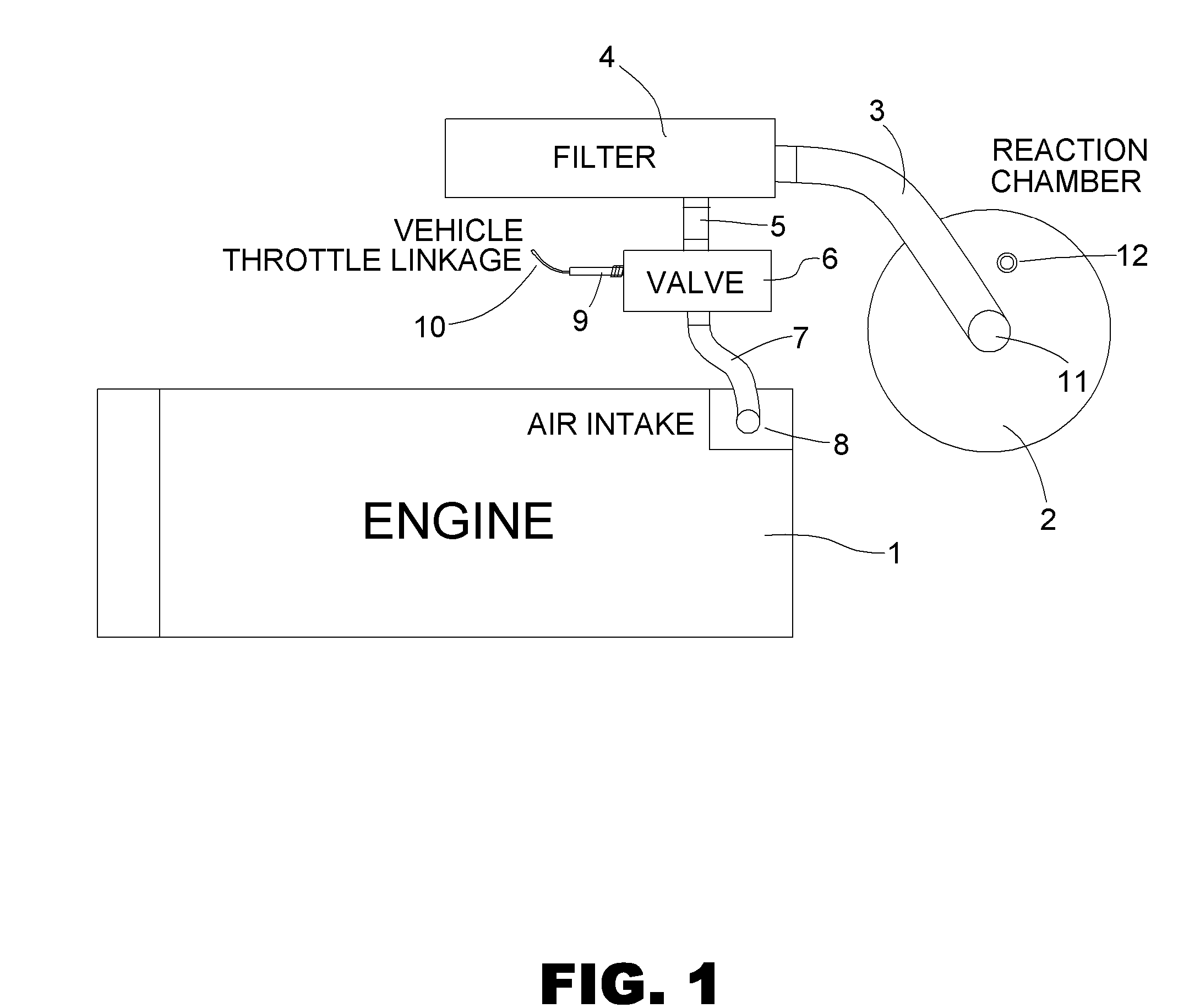Internal Combustion Engine Enhancement Device and Method
a technology for enhancement devices and internal combustion engines, which is applied in the direction of machines/engines, mechanical equipment, electric control, etc., can solve the problems of inability to control the amount of gas produced, danger of electrical shock, corrosive acids, etc., and achieve the effect of reducing the rate of hydrogen generation, and increasing the amount of hydrogen gas
- Summary
- Abstract
- Description
- Claims
- Application Information
AI Technical Summary
Benefits of technology
Problems solved by technology
Method used
Image
Examples
Embodiment Construction
[0013]The present invention is directed toward a vacuum controlled device that can produce hydrogen gas on demand, and under control of a vehicle's throttle as needed, for injecting into the air intake of an internal combustion engine. The present invention can be used with virtually any internal combustion engine (including diesel engines) and finds applications in cars, trucks, boats, ships, locomotives, agricultural machines, military vehicles and other devices such as mobile power stations, generators and any other internal combustion engines using gasoline, diesel, natural gas, propane or any other fuel.
[0014]Turning to FIG. 1, a block diagram of an embodiment of the present invention is seen. The internal combustion engine 1 has an air intake 8 where flow into the air intake is controlled by a valve 6 that is coupled to the vehicle's throttle linkage 9, 10. A parallel path of regular air (not shown) can optionally be supplied into the air intake at this point if desired. A rea...
PUM
 Login to View More
Login to View More Abstract
Description
Claims
Application Information
 Login to View More
Login to View More - R&D
- Intellectual Property
- Life Sciences
- Materials
- Tech Scout
- Unparalleled Data Quality
- Higher Quality Content
- 60% Fewer Hallucinations
Browse by: Latest US Patents, China's latest patents, Technical Efficacy Thesaurus, Application Domain, Technology Topic, Popular Technical Reports.
© 2025 PatSnap. All rights reserved.Legal|Privacy policy|Modern Slavery Act Transparency Statement|Sitemap|About US| Contact US: help@patsnap.com



